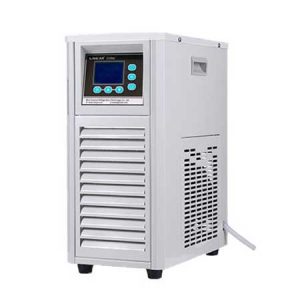air cooled chiller water cooled chiller
Air-Cooled Chiller vs. Water-Cooled Chiller: A Comprehensive Comparison
Chillers are indispensable in maintaining comfortable temperatures in commercial buildings, industrial processes, and data centers. Two common types of chillers used for this purpose are air-cooled and water-cooled chillers. Each has its own set of advantages and disadvantages, making one more suitable for certain applications over the other. This article delves into the details of these chiller systems to help users make an informed decision.

Operational Principles
Air-Cooled Chillers:
Air-cooled chillers use fans to dissipate heat directly into the atmosphere. They are compact, easy to install, and require minimal maintenance. The heat exchange occurs through air-cooled condensers, which are less affected by ambient temperatures compared to water-cooled counterparts.
Water-Cooled Chillers:
Water-cooled chillers rely on water circulation to transfer heat from the condenser to a cooling tower, where the heat is released into the atmosphere. They are more complex systems that require a continuous water supply and a cooling tower, but they offer higher efficiency and better performance in warmer climates.
Efficiency and Performance

Efficiency: Water-cooled chillers are generally more efficient due to the higher heat transfer rate of water compared to air. They can operate effectively in a wider range of ambient temperatures, making them suitable for larger cooling loads.
Performance: Air-cooled chillers may suffer from reduced efficiency in hot climates, as their performance is more affected by outdoor temperatures. Water-cooled chillers, on the other hand, maintain consistent performance regardless of outdoor conditions.
Environmental Impact
Water Usage: Water-cooled chillers consume more water due to the need for a cooling tower, which can be a concern in areas with water scarcity. Air-cooled chillers do not use water for heat rejection, making them a more environmentally friendly option in such regions.
Noise Pollution: Air-cooled chillers can be noisier due to the operation of fans, which may contribute to noise pollution in certain areas.
Applications

Air-Cooled Chillers: They are ideal for applications with limited space, areas with water scarcity, and regions with moderate climates. Their ease of installation and lower initial cost make them a popular choice for small to medium-sized buildings.
Water-Cooled Chillers: They are suitable for large-scale industrial applications, data centers, and facilities with high cooling demands. Their higher efficiency and consistent performance make them a preferred choice in warmer climates and large facilities.
Market Trends
The global chiller market is evolving with a focus on energy efficiency and environmental sustainability. Both air-cooled and water-cooled chillers are seeing technological advancements that enhance performance and reduce environmental impact. For instance, the use of variable frequency drives (VFDs) in air-cooled chillers improves part-load efficiency, while water-cooled chillers are benefiting from advanced water treatment technologies to reduce water consumption and environmental impact.
Conclusion
The decision between air-cooled and water-cooled chillers should be based on a variety of factors, including the specific application, climate conditions, initial and operating costs, and environmental considerations. Air-cooled chillers offer simplicity and lower initial costs, making them suitable for moderate climates and water-scarce regions. Water-cooled chillers, with their higher efficiency and quieter operation, are ideal for large-scale applications and hot climates. Understanding the operational differences, environmental impacts, and market trends of both types of chillers is essential for selecting the most appropriate cooling solution for any given scenario. As technology continues to advance, both air-cooled and water-cooled chillers will play a crucial role in meeting the cooling demands of a diverse range of industries while minimizing environmental impact.
Related recommendations
chill water system
496Introduction to Chilled Water Systems Chilled water systems have become a cornerstone of modern cooling technology, offering efficient and reliable cooling solutions in various applications. Th...
View detailsWhat is the reason why the water cooled chiller system does not cool?
1013What is the reason why the water cooled chiller system does not cool? There may be several reasons why the water-cooled refrigeration system does not cool: 1. Insufficient coolin...
View detailscold water cooling system
770Cold Water Cooling Systems: Design and Efficiency Introduction Cold water cooling systems are vital in industries such as manufacturing, pharmaceuticals, and data centers, where they help re...
View detailsmotor chiller
283Working Principles of Motor ChillersHeat Transfer BasicsMotor chillers operate on the fundamental principle of heat transfer. Motors, during operation, convert electrical energy into mechanical ...
View details
 LNEYA Chiller
LNEYA Chiller






HelloPlease log in